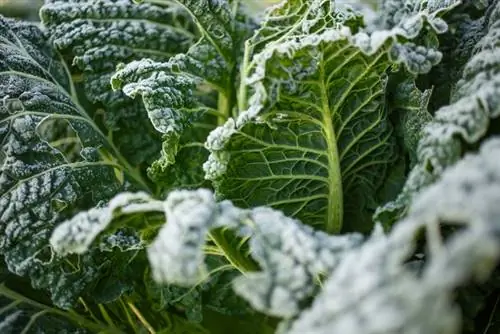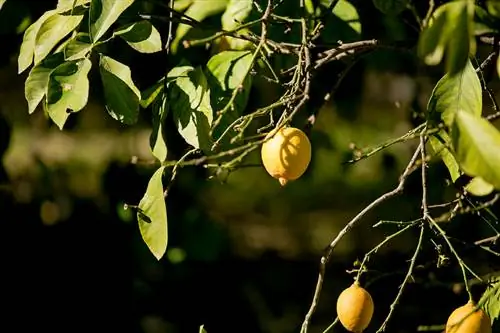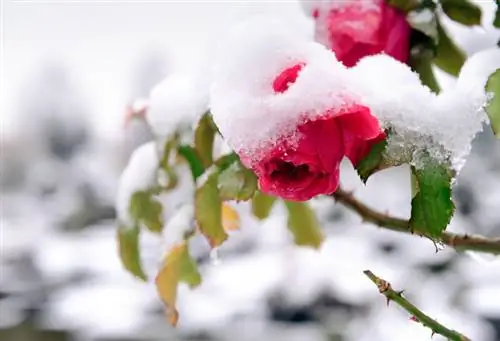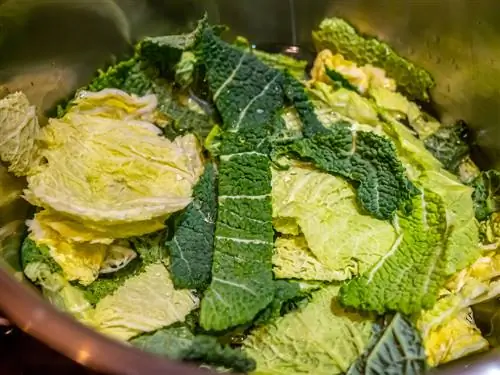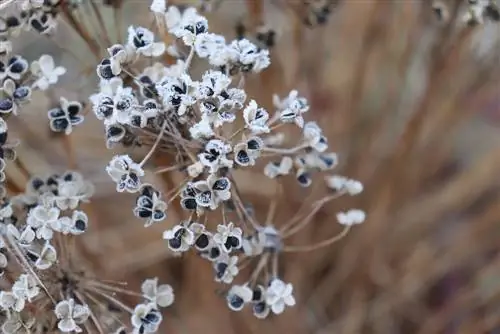- Author admin [email protected].
- Public 2023-12-16 16:46.
- Last modified 2025-01-23 11:20.
Savoy cabbage is hardy. But does he still need winter protection? Find out below how much frost the savoy cabbage can tolerate, how you should protect it from the cold and whether it tastes better when it has been exposed to frost.
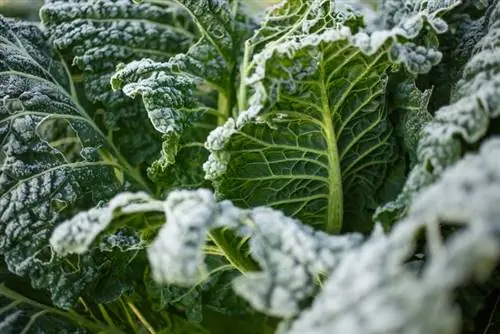
How much frost can savoy cabbage tolerate?
Savoy cabbage can tolerate frost down to -10 degrees, although winter hardiness varies depending on the variety. Late varieties of savoy cabbage such as winter savoy cabbage are hardy, while early varieties are more sensitive to cold. Regardless of the frost, savoy cabbage always tastes aromatic and slightly sweet.
Savoy cabbage is hardy down to -10 degrees, right?
The rule of thumb is that savoy cabbage can easily tolerate temperatures down to -10 degrees. However, not all savoy cabbage is the same. Frost hardiness can vary depending on the variety. The so-called winter savoy cabbage is well hardy and is only planted in October and harvested in early spring. Even late varieties, which according to the manufacturer can often be harvested until January or February, are usually well hardy. Early varieties, on the other hand, are often less immune to cold and should be harvested by September/October.
Protect savoy cabbage from frost
One thing is certain: Even if late Savoy cabbage varieties should in principle survive German winters, you can help them do so by covering the root area with brushwood and/or leaves. This is particularly advisable when temperatures drop below -10 degrees or it is very cold for a long period of time.
Caring for savoy cabbage in winter
Savoy cabbage should be watered on frost-free days, even in winter - as long as it doesn't rain. However, savoy cabbage does not need fertilization.
Harvesting savoy cabbage in winter
You can harvest savoy cabbage little by little by cutting off the outer leaves and leaving the heart intact, or you can harvest it completely. This applies to both summer and winter harvests. Here you can find out more about the harvest time for savoy cabbage.
Does savoy cabbage taste better after it gets frost?
Kale is known to taste better after the first frost. This is because it contains relatively many bitter substances, the production of which stops when it is cool for a long time. However, temperatures just above zero are sufficient for this. However, this does not apply to savoy cabbage, as this type of cabbage contains hardly any bitter substances and therefore tastes deliciously aromatic and slightly sweet even when harvested in summer.
The winter bed: harvesting vegetables in winter
Savoy cabbage is not the only vegetable that can be harvested in winter. Why not create a winter bed so that you can bring fresh vegetables to the dining table even in frost and snow. These plants tolerate frost:
- Kale
- Kohlrabi
- Red cabbage
- Cauliflower
- Brussels sprouts (does not tolerate continuous frost)
- Jerusalem Jerusalem artichoke
- Winter squash
- Chicory
- Leek
- Carrots
- Parsnips
- Turnips
- Beetroot
- Lamb lettuce
- Radicchio
- Black Roots
- Winterpostelein
- Root parsley
- Chives

